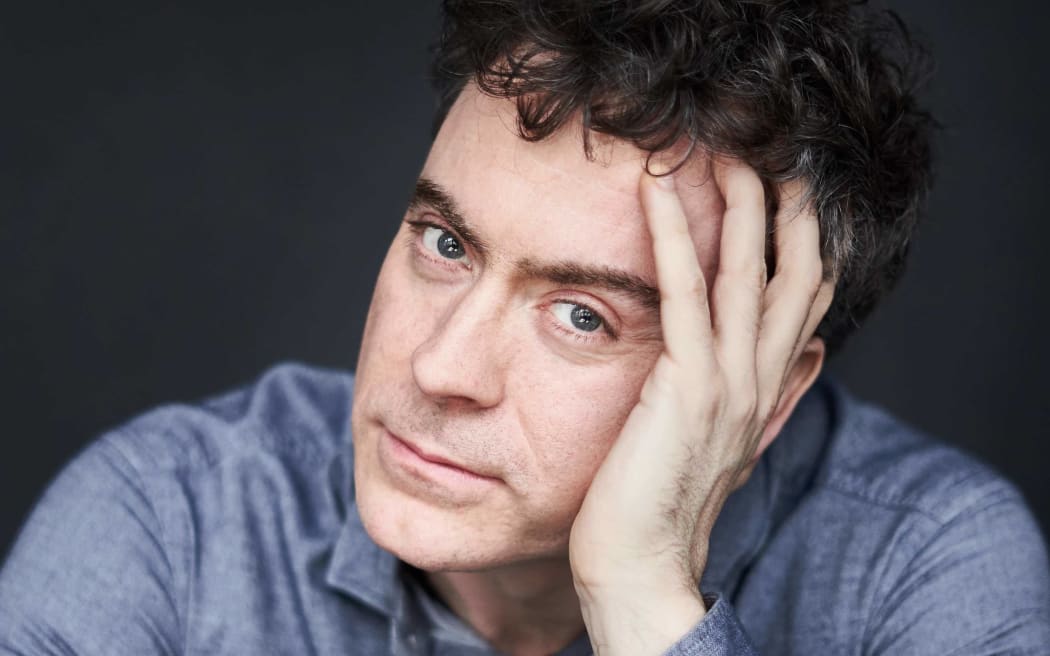
Pianist Paul Lewis Photo: Copyright: Kaupo Kikkas
Paul Lewis, piano
Paul Lewis' father was a lover of the music of John Denver, so it took a small electronic organ and a local library in a 'satellite' town of Liverpool to awaken his interest in classical music. The librarian was clearly a lover of classical music and encouraged Lewis to take home many recordings, which happened to include a number by a pianist who would become his mentor, the renowned Alfred Brendel.
It was at a masterclass with Brendel at the Guildhall School of Music, Lewis played him a Haydn sonata, fully expecting to be told to give up the piano. Instead he was told 'let's keep in touch'. And they did, Lewis spending many hours studying with Brendel. The two shared a similar affinity for the piano music of Beethoven and Schubert, though you will find recordings of romantic repertoire by Schumann, Mussorgsky, Brahms and Liszt on Lewis' recording label, Harmonia Mundi.
With Beethoven being sentral to Lewis' repertoire, the 250th anniversary of the composers' birth in 2022 saw the English pianist touring the world for performances like this complete set of Beethoven Concertos, and he took part in the BBC's documentary Being Beethoven.
Gemma New, conductor
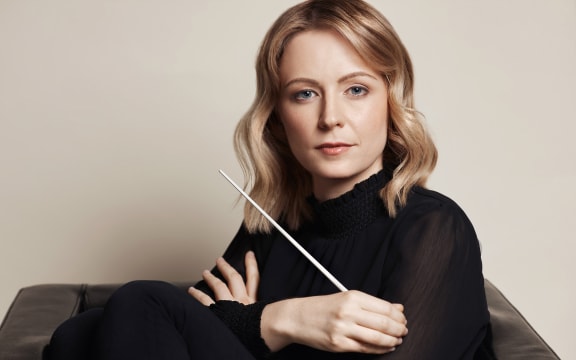
Photo: Roy Cox Photography
Sought after for her insightful interpretations and dynamic presence, New Zealand-born Gemma New is the Artistic Advisor and Principal Conductor of the New Zealand Symphony Orchestra and Music Director of Canada’s Hamilton Philharmonic Orchestra. Hailed by the St. Louis Post-Dispatch as “a rising star in the musical firmament,” New is the recipient of the prestigious 2021 Sir George Solti Conducting Award.
In Summer 2023, New made debuts at the BBC Proms with the BBC Scottish Symphony Orchestra and Mostly Mozart Festival at Lincoln Center, and she returned to the Hollywood Bowl with the Los Angeles Philharmonic. During her 2023/24 season, New makes subscription debuts with the London Philharmonic Orchestra, Chicago Symphony Orchestra, Los Angeles Philharmonic, Vancouver Symphony and the Orchestre National de France.
Piano Concerto No 1 in C Op 15
Beethoven's First Piano is actually the second one he composed. And yes, the second concerto is his first, which was written at least four years before this one, but there was long delay in getting it ready to be performed and then another delay before he wrote down the piano part which he'd played from memory. By the time it was ready to be published, Beethoven had written, performed, and had published another concerto (the 'Concerto No. 1 in C Major, Opus 15).
He premiered the work in 1798 in Prague where another young-pianist composer, an Václav Tomášek , heard it and wrote:
“I admired his powerful, brilliant playing, but his frequent daring changes from one melody to another, putting aside the organic, gradual development of ideas, did not escape me. Evils of this nature frequently weaken his greatest compositions, those which sprang from a too exuberant conception. The listener is often rudely awakened... The singular and original seemed to be his chief aim...”
Piano Concerto No 2 in Bb Op 19
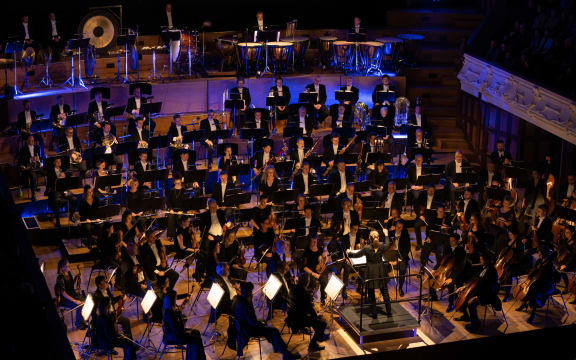
Gemma New conducting the NZSO at the Auckland Town Hall Photo: Latitude Creative
In 1792 the young Beethoven, was invited to Vienna to study with Haydn. For the ambitious twenty-one year old, this was an opportunity not to be missed and he moved to the musical heart of Europe; and the city which would be his home for the rest of his life.
Vienna suited Beethoven very well with its many concert halls and salons, promoting a sophisticated lifestyle that he adapted to very readily. Sadly he didn’t adapt so well to his new teacher. Beethoven was boisterous and impatient to establish himself as a new force in music, and wasn’t the kind of student for whom the elderly Haydn had either the energy or the patience. Teacher and pupil were quite unsuited to each other in temperament, and parted company rather quickly, though with no apparent regret on either side.
When Beethoven performed in Vienna for the first time (on 29 March 1795), he played the Piano Concerto No. 2 in B-flat Major. It was a work with which the composer himself was quite dissatisfied. He revised it four times before finally giving it to his publisher in 1801, saying with uncharacteristic modesty, that it was “not one of the best” of his compositions. In the intervening period Beethoven had written another piano concerto, the C-major, published in March of the same year and known as “number one”, with tonight’s work following in December and consequently being known as “number two”.
Of his piano concertos, the B-flat is perhaps the most typically 18th century in style. There are echoes of Mozart and Haydn particularly in the first movement, and in the piano writing throughout. However Beethoven’s rebellious spirit is evident beneath the classical decorum, and hints at a future break away from the classical model.
Piano Concerto No 3 in C minor Op 37
Beethoven was thirty when he completed what’s now known as his Piano Concerto No 3. It was the first in a minor key, and the first to reject the dominant Mozartean style of piano concerto, in which graceful phrases flow back and forth on the keyboard, echoing with the orchestra. Instead, Beethoven produced a more varied and dynamic work, rich in the turbulent emotions for which he was becoming known.
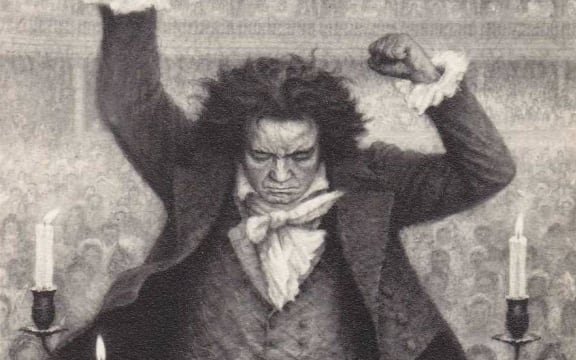
Beethoven conducting Photo: Katzaroff, Public Domain
The premiere on 5th April 1803 at the Theater an der Wien was part of a huge programme, mostly new works and inevitably under rehearsed. Preparation was so rushed that Beethoven hadn’t even written out the entire solo piano part - a fact that didn’t concern him in the least as he was the soloist and planned to play it mostly from memory. However his page-turner found the situation unsettling. He said later; “I saw almost nothing but empty leaves; at most on one page or the other a few Egyptian hieroglyphs wholly unintelligible to me scribbled down to serve as clues for him... He gave me a secret glance whenever he was at the end of one of the invisible passages, and my scarcely concealed anxiety not to miss the decisive moment amused him greatly. He laughed heartily at the jovial supper we ate afterward.”
Piano Concerto No 4 in G Op 58
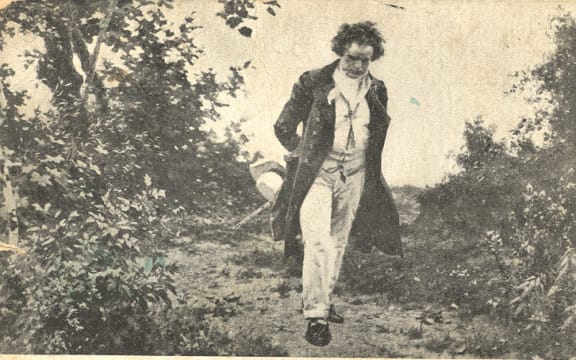
Beethoven walking in nature Photo: Public Domain
Completed during the busy year of 1806 along with with the Appassionata Sonata, the three Razumovsky Quartets, the Fourth Symphony and the Violin Concerto for the composer’s attention.
The opening of the Fourth Piano Concerto was considered highly unorthodox in its time, with the piano alone presenting four bars of the first theme, before the orchestra enters. So begins the largest movement of the concerto, which combines all of the grandeur and spaciousness of design for which Beethoven was renowned.
The second movement, famously described by Liszt as “Orpheus taming the Furies”, is in the form of a dialogue between the piano and the orchestra, with the orchestra speaking in strong and almost defiant accents, while the piano replies submissively. After the second movement’s cadenza, the music goes straight into the colourful last movement - a rondo with an extended coda leading to a brilliant presto ending.
The public premiere of the Fourth Piano Concerto took place in December 1808 as part of an all Beethoven concert at the Theater an der Wien. The concert was something of a marathon, lasting four hours and including not only the Fourth Piano Concerto, but also the Coriolan Overture, the premieres of the Fifth and Sixth Symphonies, movements from the Mass in C, the Choral Fantasia, which had been written especially as a finale for this concert, and improvisations by Beethoven.
Piano Concerto No 5 in Eb Op 73, Emperor
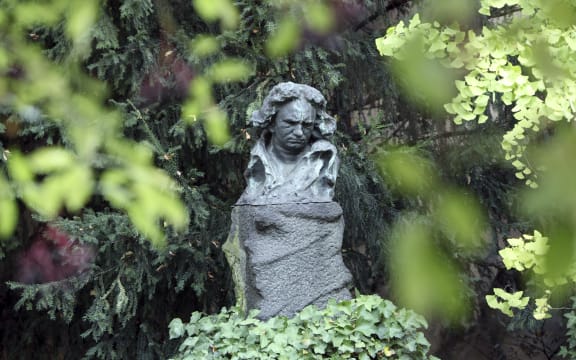
Sculpture at the Beethoven House in Bonn Photo: Supplied by Deutsche Welle
Beethoven’s Fifth Piano Concerto was composed as Napoleon’s armies were bombarding Vienna in May 1809. Beethoven’s lodgings were in the midst of the fighting, and the noise and commotion often kept him from working on the concerto. He wrote at the time: “What a disturbing, wild life around me! Nothing but drums, cannons, men, misery of all sorts!”
No-one knows how the concerto came to be known as the Emperor. Beethoven certainly didn’t give it that title. He once said of Napoleon: “It is a pity I do not understand the art of war as well as I do the art of music. Then I would conquer him!”
It’s well known that Beethoven originally dedicated his Eroica Symphony to Napoleon, and then angrily tore off the dedication page when Bonaparte declared himself emperor. Interestingly, both the third Symphony and the fifth Piano Concerto are in the same ‘heroic’ key of E flat. The concerto’s heroic quality is immediately announced in the arresting opening of orchestral chords interrupted by an elaborate piano cadenza. The serene slow movement is one of pure lyricism and presents a huge contrast in mood and style to the opening Allegro. It’s a type of theme with variations, which leads directly into the rondo finale, with its highly rhythmic motif.

